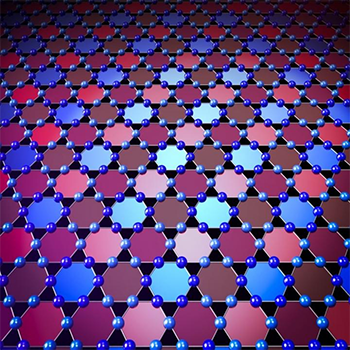Quantum Topology: Unveiling Exotic States of Matter
What is Quantum Topology?
Quantum topology is a branch of physics that studies the topological properties of quantum systems. It explores how the quantum states of matter can be classified based on their global, topological features, which are insensitive to local perturbations. Quantum topology reveals the existence of exotic states of matter, such as topological insulators and topological superconductors, which exhibit unique properties and hold promise for applications in quantum computing and spintronics.

Topological Phases of Matter
Quantum topology classifies quantum systems into different topological phases based on their global properties. These phases are characterized by topological invariants, which are quantities that remain unchanged under continuous deformations of the system. Some notable topological phases include:
Topological Insulators
Topological insulators are materials that behave as insulators in their bulk but possess conducting states on their surface or edges. These surface states are topologically protected, meaning they are robust against local perturbations and cannot be destroyed by impurities or defects. Topological insulators have potential applications in spintronics and quantum computing.
Topological Superconductors
Topological superconductors are materials that exhibit superconductivity with topologically protected states. These states can host Majorana fermions, which are exotic particles that are their own antiparticles. Majorana fermions have potential use in topological quantum computing, where they can serve as fault-tolerant qubits.
Quantum Hall States
Quantum Hall states are topological phases that arise in two-dimensional electron systems subjected to strong magnetic fields. They exhibit quantized Hall conductance and host chiral edge states that carry electrical current without dissipation. The discovery of quantum Hall states marked the beginning of the field of quantum topology.
Topological Invariants
Topological invariants are mathematical quantities that characterize the topological properties of quantum systems. They are invariant under continuous deformations of the system, making them robust against local perturbations. Some important topological invariants include:
Chern Number
The Chern number is a topological invariant that characterizes the quantized Hall conductance in quantum Hall systems. It is an integer that counts the number of chiral edge states and reflects the topology of the electronic wavefunctions in the bulk of the material.
Z2 Invariant
The Z2 invariant is a topological invariant that distinguishes between trivial and non-trivial topological insulators. It takes on values of 0 or 1, with 1 indicating the presence of topologically protected surface states. The Z2 invariant is related to the time-reversal symmetry of the system.
Experimental Realization
Quantum topological phases have been experimentally realized in various systems, including:
- 2D electron gases in semiconductor heterostructures (quantum Hall effect)
- Topological insulators based on bismuth compounds (Bi2Se3, Bi2Te3)
- Topological superconductors in proximity-coupled semiconductor nanowires
- Cold atom systems in optical lattices
These experimental realizations have provided valuable insights into the physics of quantum topology and have paved the way for potential applications in quantum technologies.
Applications and Future Perspectives
Quantum topology has opened up new avenues for technological applications, particularly in the fields of quantum computing and spintronics. Topological qubits based on Majorana fermions in topological superconductors are expected to be more robust against decoherence and errors compared to conventional qubits. Topological insulators, with their spin-polarized surface states, can enable efficient spin-charge conversion and spin-based information processing.
Future research in quantum topology will focus on discovering new topological phases of matter, engineering topological materials with desired properties, and developing scalable methods for fabricating and manipulating topological devices. The integration of quantum topology with other emerging fields, such as twistronics and non-Hermitian physics, will further expand the possibilities for novel quantum phenomena and applications.
Further Reading
Reviews of Modern Physics, Colloquium: Topological insulators
Nature Reviews Physics, Opportunities in topological insulator devices
Nature Reviews Physics, Magnetic topological insulators
